Hey there! This post may contain affiliate links. As an Amazon Associate, I earn a teensy commission from qualifying purchases when you buy through these links (at no additional cost to you). For more info, please check the full disclaimer.
Knowing how to do breast cancer self-exam at home is a crucial skill. This breast cancer self-check PDF includes detailed breast self-examination instructions to take with you on the go!
Although various successful treatments for breast cancer are available right now, the number of cancerous tumors in females is still on the rise.
Why?
Because most women have no idea how to do a self-exam for breast cancer which leads to late diagnosis & higher death risk.
So to help you out, I’ve written a complete step-by-step breast self-check guide for you. Print it for free and learn about the abnormal signs of breast cancer.
How Common Is Breast Cancer?
According to an estimate by The American Cancer Society, there were almost 268,600 new cases of female breast cancer in 2019. Out of these, approximately 41,760 women were expected to die the same year.
And as if that isn’t shocking enough, here’s a table by World Cancer Research Fund International showing the top 10 countries in 2018 with the highest breast cancer rates.
| No. | Country | Rate of BC per 100,000 |
|---|---|---|
| 1 | Belgium | 113.2 |
| 2 | Luxembourg | 109.3 |
| 3 | Netherlands | 105.9 |
| 4 | France (metropolitan) | 99.1 |
| 5 | New Caledonia (France) | 98.0 |
| 6 | Lebanon | 97.6 |
| 7 | Australia | 94.5 |
| 8 | UK | 93.6 |
| 9 | Italy | 92.8 |
| 10 | New Zealand | 92.6 |
The breast cancer diagnosis reaches its peak after the age of 50 (or following menopause) and most deaths likely occur in the 80s.
Research shows that the two main problems contributing to the increased breast cancer rates are:
- Decreased number of births per woman
- High body mass index (BMI) leading to obesity
Read More: 50+ Amazing Breast Cancer Facts & Figures 2020
Why Should You Know How to Do Breast Cancer Self-Check?
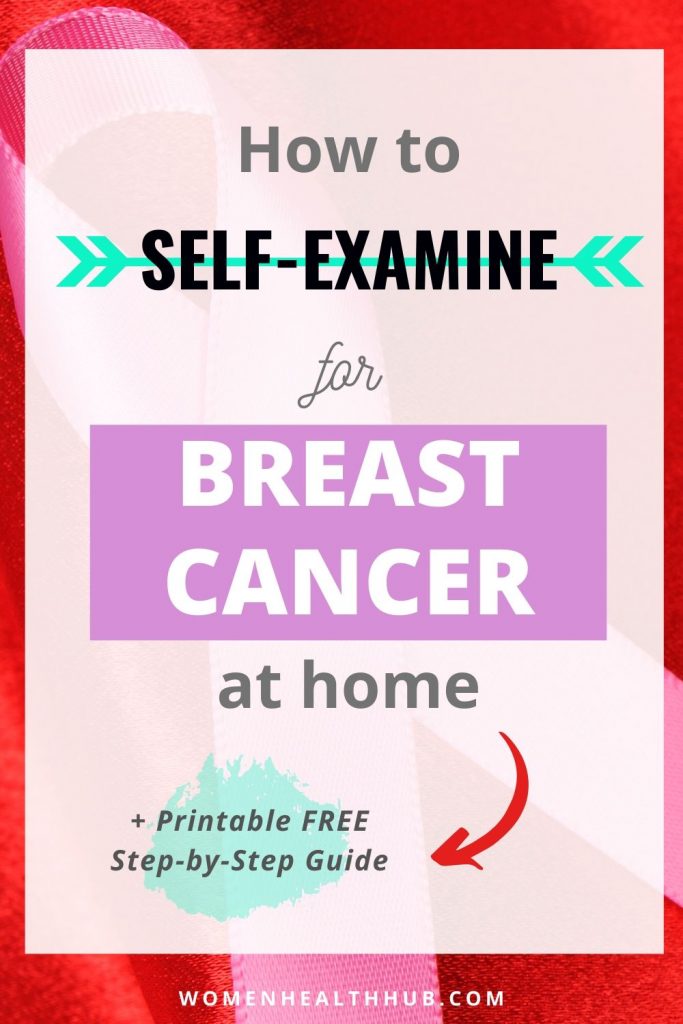
Here are a few reasons why you should know how to do complete self-examination for breast cancer:
- To Ensure Timely Detection & Treatment: Having awareness of breast cancer self-check steps can help you discover lumps or tumors at the early stages. In many developed countries, you have to go for periodic screening for breast cancer. Early detections are easier to treat & improve longevity.
- To Reduces Stress: The path after a breast cancer diagnosis is difficult for both the patient and her family. Chemotherapy and the fight alone brings a major mental & physical toll. So identifying the warning signs of breast cancer through self-examination can greatly reduce this stress.
- To Stay Prepared During Emergencies: During COVID, many women had no access to yearly mammograms. Women who know how to do breast self-check can stay alert and look out for any abnormal symptoms even if medical check-ups aren’t available.
Now let’s move on to the self-check breast cancer guide. You can also jump right to the breast self-exam PDF.
Read More: 5 Early Stages of Breast Cancer
Steps on How to Do Breast Cancer Self-Exam at Home
You can do your breast cancer self-check using 3 different methods, without relying on any diagnostic kits.
Let’s go through each breast cancer self-examination step one by one.
Download Free PDF for Breast Cancer Self-Check at home
Method 1: Breast Cancer Self-Check Guide Using Mirror
The easiest way to check for lumps and any visible signs of breast cancer is by self-examining breasts in a mirror.
Step # 1: Stand in Front of a Mirror
Stand naked in front of a mirror with a clear and complete view of your chest. I would recommend choosing a full-length mirror because it gives you better visibility.
Step # 2: Inspect Your Breasts in Four Positions
While standing, change your positions in the following ways so you can view your breasts from various angles and look for suspicious signs.
- Place each arm straight on your sides
- Raise both arms straight up over your head
- Bend forward and place the hands on your hips
- Place hands on the hips and breathe in to check the chest
Step # 3: Look for Alarming Signs of Breast Cancer
While doing the breast cancer self-check in mirror, look out for these changes:
- Are there any reddish spots or rashes?
- Are the breasts the proper shape? Naturally, some women may have an asymmetrical physique. But sudden changes in size could be risky.
- Are there any dimples, weird wrinkles, dips, or pore-like spots?
- Are there any protuberances or visible lumps on the chest or underarms?
- Do the nipples look normal? Look out for a dry-skin look, misshaped or inverted nipples, discoloration, swelling, or itchiness.
- Is there any unexpected nipple discharge such as blood, pus-like fluid, or water?
- Do you see any pronounced veins around your girls? If there’s an unusual number or size of veins in any of the breasts, it could be a dangerous sign.
Read More: 9 Serious Early Symptoms of Breast Cancer
Step # 4: Change Your Angle While Viewing
Turn to your left, right, and front sides to look for lumps and shape differences. This will help you check from various angles and find even the slightest signs of breast cancer.
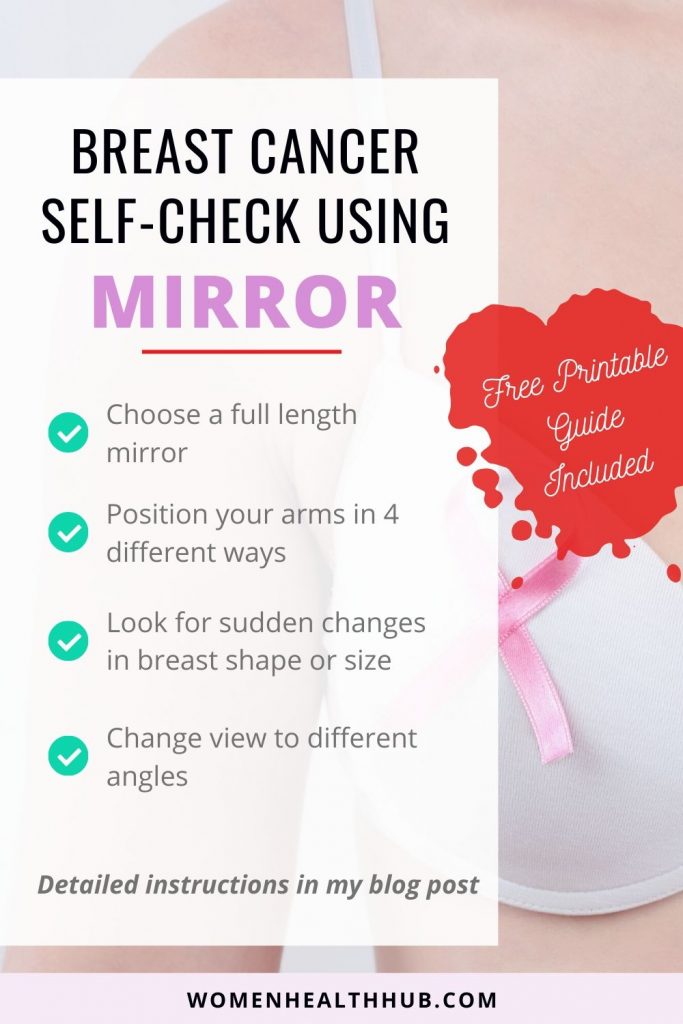
Method 2: Self-Exam Steps for Breast Cancer in Shower
This method involves two senses: touch and observe.
Many women find it easier to do breast cancer self-check while taking a bath. Being slathered with soap enhances the ability to feel abnormalities.
While this works for many, you can do this without the soap as well.
Step # 1: Apply Generous Soap or Lotion
Using soap or any products you normally use, produce enough lather so you can easily make slippery motions. Some women prefer lotions.
Step # 2: Sit or Stand in Front of a Mirror
It’s comparatively easier to feel for suspicious lumps while sitting or standing. Make sure you have a mirror in front giving you a full view of the chest.
Step # 3: Inspect Your Chest in Three Ways
To identify any abnormal symptoms, turn left, right, and front while practicing these breast cancer self-examination steps during bath.
- Raise your arms over your head
- Bend forward with both hands on hips
- Breathe in to observe the chest
Step # 4: Apply Varying Pressure Using Fingertips
You’ll need to apply pressure using fingers to feel for lumps or hardened regions and simultaneously observe the chest using similar techniques mentioned in Method 1.
Also, keep these breast cancer self-exam steps & instructions in mind while using fingers:
- Use the first 3 finger-pads and move them on each breast while applying firm pressure to feel for hardened masses.
- Use left-hand fingers to feel the right breast and vice versa.
- Move the fingers in a circular motion on the entire breast including edges, near the nipples, under armpits, and near the collarbone.
- To check for abnormal discharge, gently press the nipples.
- Don’t lift off your fingers as it can disturb the process.
- Change between low and high pressure while feeling different regions of your chest. In the soft regions such as near nipples, you’ll need to apply low pressure. Whereas in the areas with thicker tissue, high pressure is needed.
Step # 5: Check For Strange Cancer Symptoms
If you notice any or all of these changes during the breast self-exam, it could be because of underlying cancer.
- Reddish rashes or spots, orange-peel like pores, dips or uncommon folds on breast skin
- Sudden changes in breast shape or size
- Visible lumps or hard regions on the chest or inside armpits that won’t move if you touch them
- Scaly, inverted, itchy, or swollen nipples
Read More: 70+ Best Breast Cancer Prevention Foods
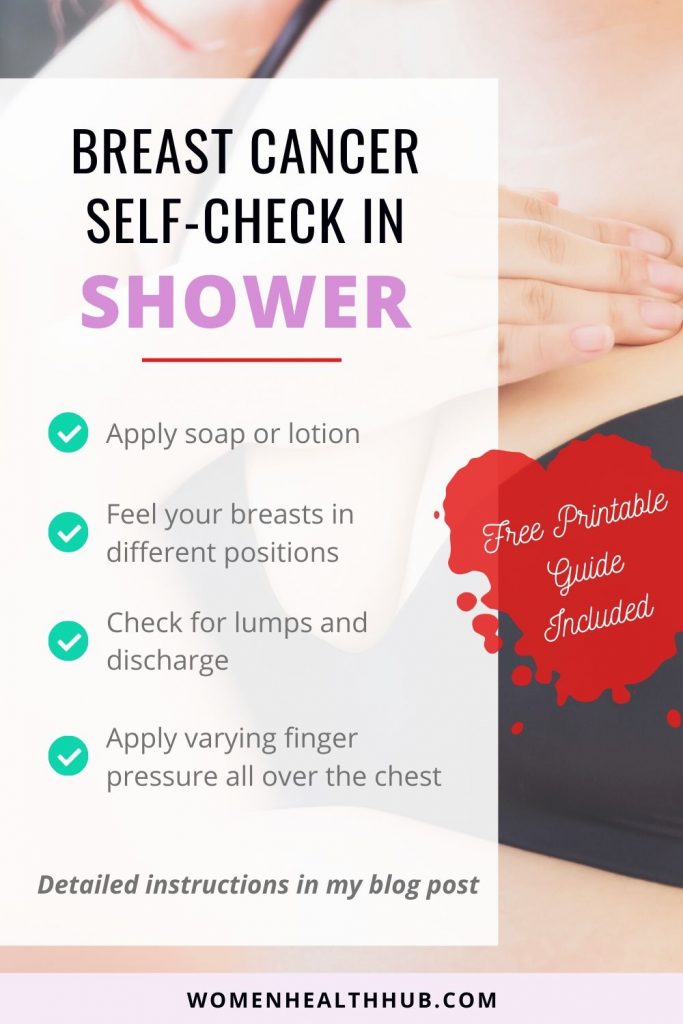
Method 3: Breast Cancer Self-Check Instructions While Lying Down
The final method of a successful breast self-exam is checking your breasts while lying down in a reclined position. You’ll find it easy to feel any signs of tumors or cysts while your arms are out.
Step # 1: Lie Down on Bed with a Pillow
Place a pillow underneath the shoulders as you lie down. While feeling the right side, the pillow should be placed under the right shoulder. Then shift it to your left while checking the other breast.
Step # 2: Position Your Arms
Spread out your arm straight over your head so you can perform a thorough breast cancer self-check and check under the armpits as well.
Step # 3: Follow Proper Touch-and-Feel Techniques
This breast self-examination method only involves the touch sense. As done in Method 2, you’ll apply pressure all over each breast using your fingertips to feel for any hard immovable lumps.
Keep these tips in your mind while doing a thorough self-exam for breast cancer signs in bed:
- Join the first 3 fingertips or pads to apply varying pressure on various regions of your chest.
- Cradle the breasts from above and below and apply pressure using fingertips to feel the tissues.
- To check the left side breast, use the right hand’s fingertips and vice versa.
- Start from the nipple and gradually move outward to the edges and armpits while applying pressure in circular, diagonal, upward, and downward motions.
- Use your fingertips to feel the edges, near the collarbone, cleavage, near the nipples, under the boobs, and the armpits.
- To feel the upper layer you’ll need to apply soft pressure; for the tissue in the middle of the breasts apply medium pressure; and for the deep tissue near the ribs, use firm fingers to feel for abnormalities.
- Gently squeeze the nipples to check for discharge.
- Don’t lift off your fingers during the process. Make continuous uninterrupted motions.
Step #4: Look Out for Strange Signs
Check for any hardened masses or lumps or dry, wrinkly skin signs as they might indicate an underlying tumor development. Bloody, watery, or yellowish nipple discharge could also be a sign of breast problem.
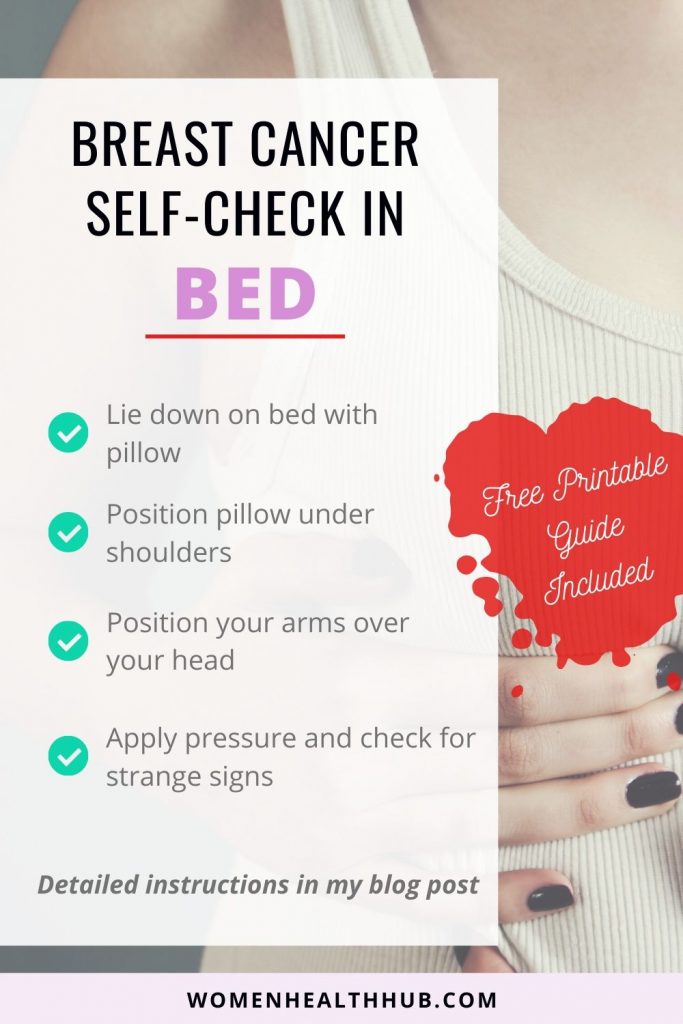
I hope this blog helped you understand the importance of breast self-examination at home. Plus, you now know the necessary steps for how to do your breast self-check every month.
If you found this breast self-exam guide useful, please share it with your friends and family. Also, don’t forget to download the instructional breast cancer self-exam PDF for free!
References:
- https://www.cancer.org/content/dam/cancer-org/research/cancer-facts-and-statistics/breast-cancer-facts-and-figures/breast-cancer-facts-and-figures-2019-2020.pdf
- https://www.webmd.com/breast-cancer/benign-breast-lumps
- https://www.breastcancer.org/symptoms/testing/types/self_exam
- https://www.missionrmc.org/services/breast-care-center/steps-to-breast-self-examination/
- https://www.nationalbreastcancer.org/what-is-brca
- https://ww5.komen.org/BreastCancer/GeneMutationsampGeneticTesting.html

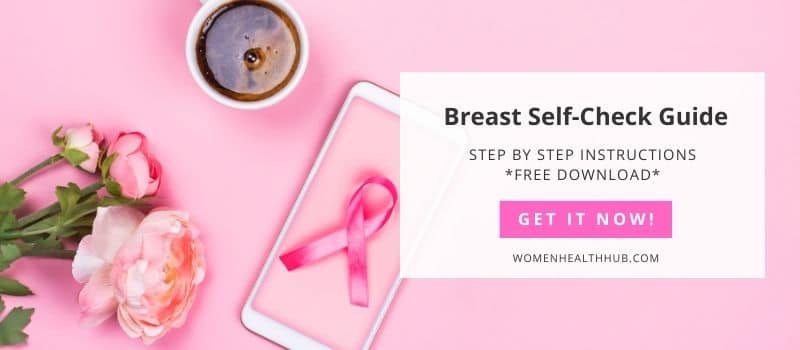
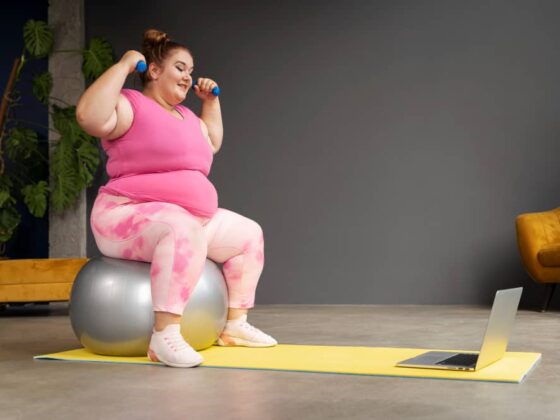
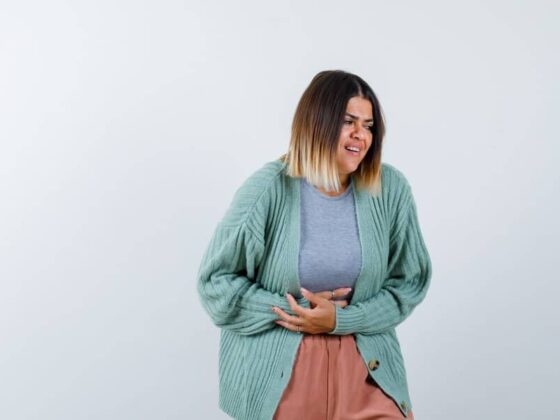

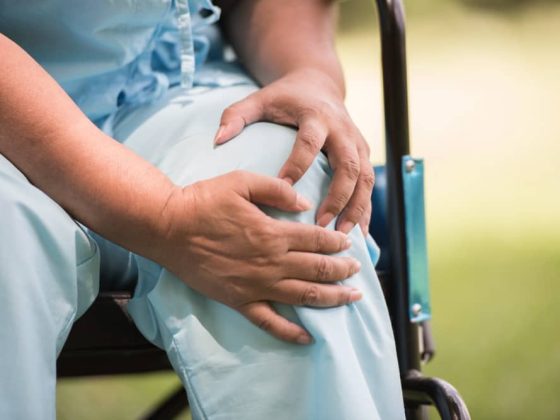


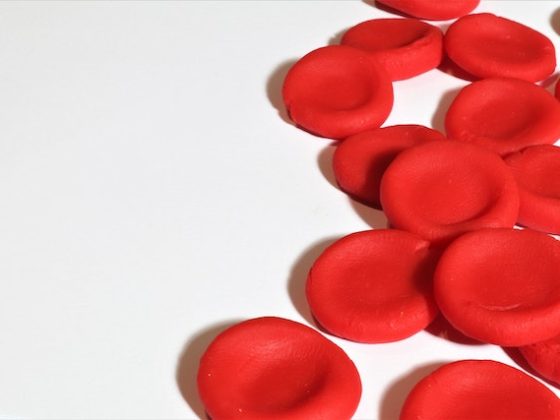
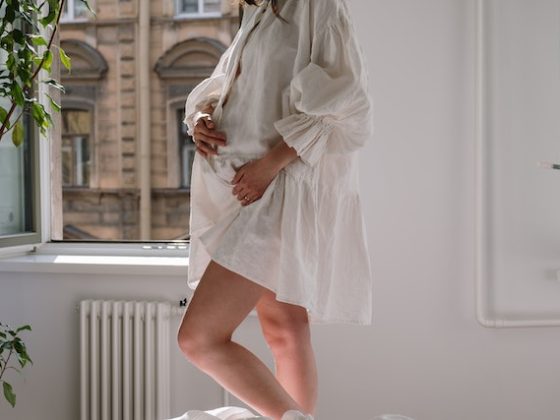
2 comments
Ah this post came to me at such a great time. I recently tested for the BRCA gene because my maternal grandmother has it and breast cancer and her brother did as well. So I have definitely had this on my mind and have been worried about it. I haven’t gotten the results back yet, but even so all this information is so helpful. I try to check my breasts as often as I can with this history of breast cancer running through my family. Thanks so much for sharing this very useful and helpful post!
Thank you for the kind words, Charity. That’s great, regular exams + the gene test both are the best ways to prevent breast cancer.